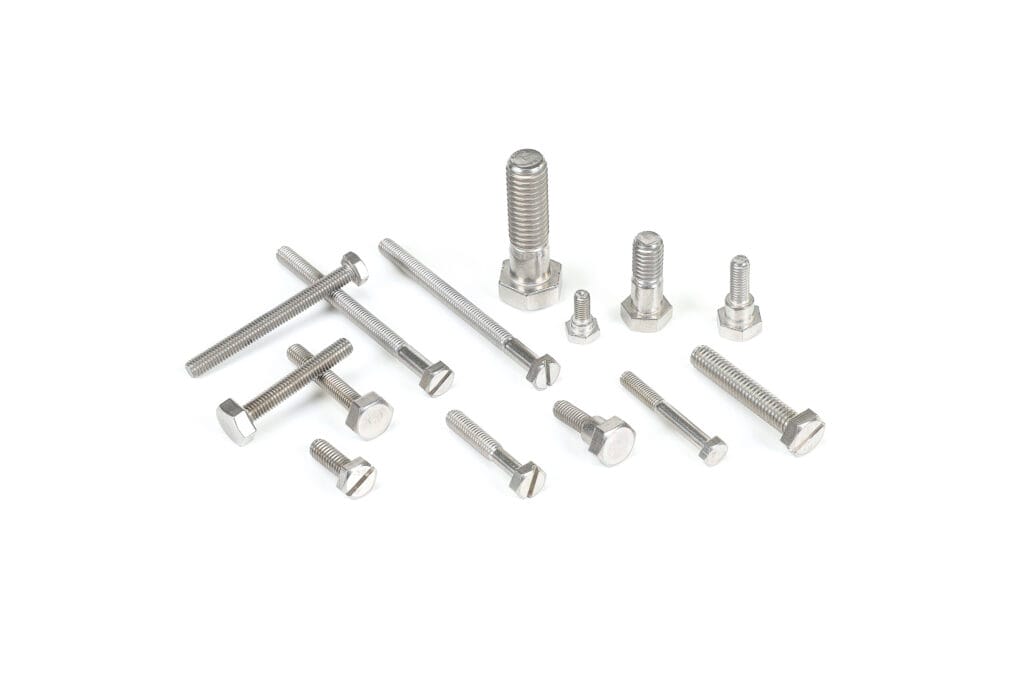When it comes to choosing stainless steel nuts, bolts, and other fasteners, understanding what affects their prices is crucial for manufacturers, distributors, and end-users. The pricing of stainless steel fasteners is influenced by multiple factors including raw material costs, manufacturing processes, labor costs, and overall market dynamics. Knowing these price factors can help you plan better, reduce production costs, and build long-term supply chains with trusted partners.

1. Raw Material Prices and Material Quality
The most significant factor that affects prices is raw material costs. Stainless steel fasteners are typically made from 304 stainless steel or other high-strength alloys, depending on specific requirements. Fluctuations in the pricing of stainless steel are largely determined by global raw material prices for nickel, chromium, and molybdenum.
Material quality also plays a major role in the final price. Higher grades of stainless steel with better corrosion resistance and strength will naturally cost more but offer longer lifespan and improved performance in demanding environments.
2. Manufacturing Processes and Production Costs
Different manufacturing processes—such as cold forging, machining, or hot forming—require various levels of precision, machinery, and energy. Each stage in production affects the total production costs. For example, high-precision nuts and bolts designed for aerospace or marine applications require more advanced processes, which contribute to a higher overall cost.
In addition, the efficiency of the fastener manufacturer’s production system directly influences cost control. Modern automation and quality control systems help reduce waste and improve consistency, resulting in competitive pricing without compromising quality.
3. Labor Costs and Regional Differences
Labor costs vary greatly between countries and regions. In areas with higher wages and strict labor regulations, the production costs of stainless steel fasteners are naturally higher. On the other hand, fastener manufacturers in regions with optimized manufacturing systems and skilled labor can maintain competitive prices while still ensuring high strength and quality standards.
4. Supply Chains and Logistics
Efficient supply chains can significantly impact the final cost of finished products. A well-organized logistics network helps reduce transportation delays, storage expenses, and handling costs. For international buyers, shipping routes, tariffs, and global trade policies can also affect pricing. Long-term supply chain stability ensures consistent product availability and better price management over time.
5. Market Dynamics and Global Price Fluctuations
The stainless steel fastener market is influenced by global market dynamics, including demand and supply balance, energy prices, and geopolitical conditions. When demand for stainless steel in industries like construction, automotive, or energy rises, a price increase is often inevitable. Tracking these market movements helps businesses make informed purchasing decisions and manage cost risks effectively.
FAQ: Stainless Steel Fastener Price Factors
1. What is the main factor affecting the price of stainless steel fasteners?
The biggest factor is raw material prices, especially the cost of stainless steel alloys such as 304 stainless steel. Fluctuations in nickel and chromium prices directly affect overall fastener pricing.
2. How do manufacturing processes influence the final cost?
Complex or precision manufacturing processes increase production costs. Fasteners requiring tighter tolerances, special coatings, or high strength grades tend to be more expensive due to additional processing and quality checks.
3. Why do labor costs vary across different fastener manufacturers?
Labor costs depend on the country’s wage structure, skill levels, and manufacturing efficiency. Regions with advanced automation and skilled workers can often produce high-quality fasteners at competitive prices.
4. Can supply chains impact stainless steel fastener prices?
Yes. Efficient supply chains reduce logistics and inventory costs, while disruptions—such as shipping delays or raw material shortages—can cause sudden price increases in finished products.
5. What role do market dynamics play in fastener pricing?
Global market dynamics, including economic trends, energy prices, and raw material demand, all affect the pricing of stainless steel fasteners. Monitoring these factors helps businesses plan budgets and manage long-term cost stability.
Conclusion
Understanding the key factors behind stainless steel fastener pricing—such as raw material costs, manufacturing processes, labor costs, and supply chain efficiency—allows buyers and manufacturers to make informed decisions. By analyzing market dynamics and maintaining strong relationships with trusted fastener manufacturers, businesses can reduce overall cost, ensure consistent material quality, and achieve stable, long-term growth in a competitive market.
